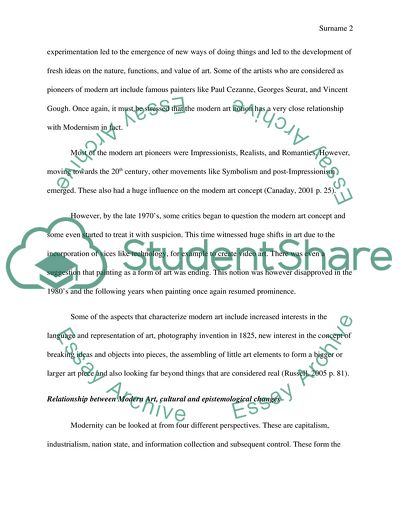Cite this document
(“How does the art produced in the modern period reflect the cultural Essay”, n.d.)
Retrieved from https://studentshare.org/sociology/1616666-how-does-the-art-produced-in-the-modern-period-reflect-the-cultural-and-epistermological-changes-of-the-time
Retrieved from https://studentshare.org/sociology/1616666-how-does-the-art-produced-in-the-modern-period-reflect-the-cultural-and-epistermological-changes-of-the-time
(How Does the Art Produced in the Modern Period Reflect the Cultural Essay)
https://studentshare.org/sociology/1616666-how-does-the-art-produced-in-the-modern-period-reflect-the-cultural-and-epistermological-changes-of-the-time.
https://studentshare.org/sociology/1616666-how-does-the-art-produced-in-the-modern-period-reflect-the-cultural-and-epistermological-changes-of-the-time.
“How Does the Art Produced in the Modern Period Reflect the Cultural Essay”, n.d. https://studentshare.org/sociology/1616666-how-does-the-art-produced-in-the-modern-period-reflect-the-cultural-and-epistermological-changes-of-the-time.


